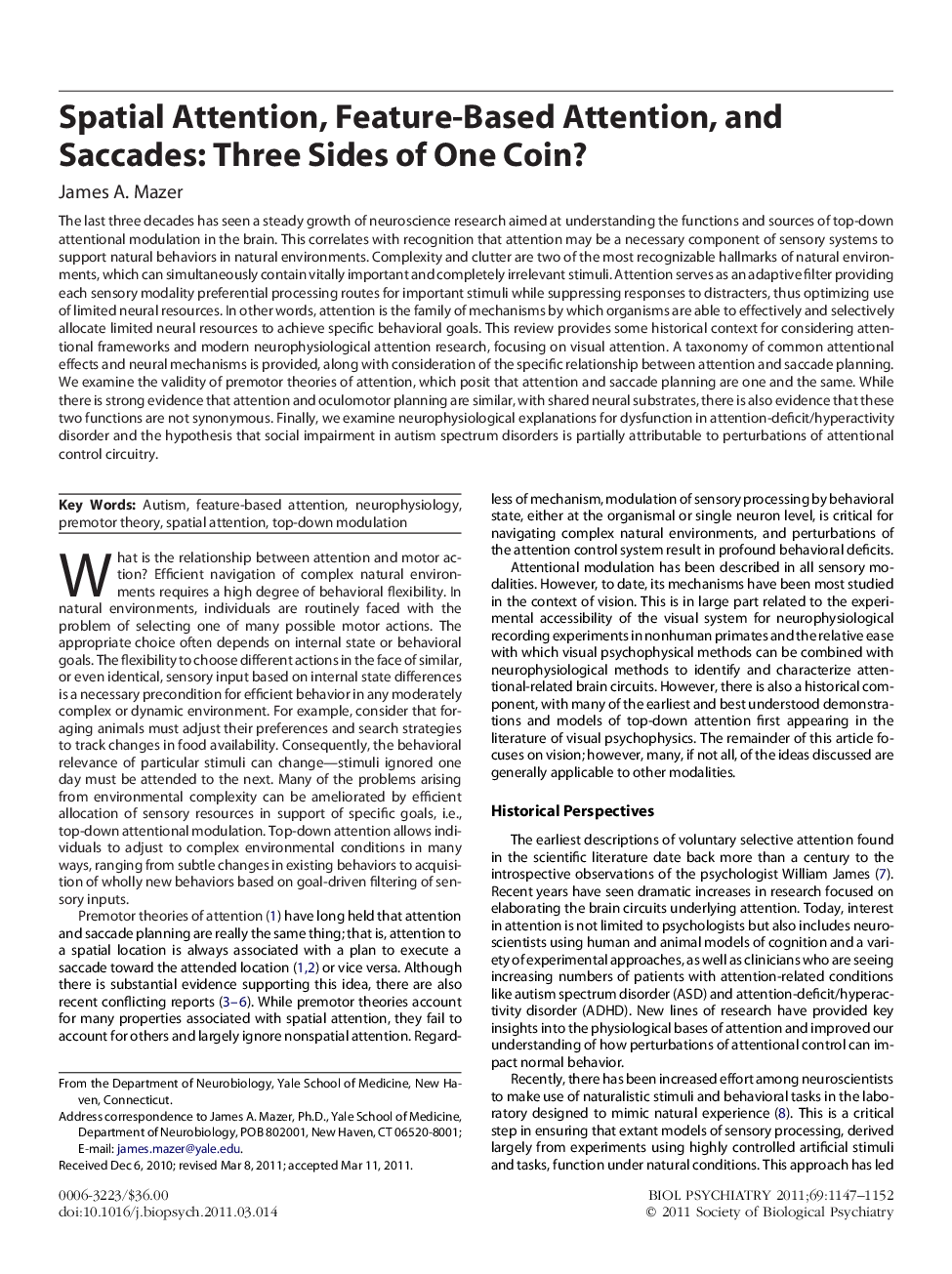| Article ID | Journal | Published Year | Pages | File Type |
|---|---|---|---|---|
| 4178601 | Biological Psychiatry | 2011 | 6 Pages |
The last three decades has seen a steady growth of neuroscience research aimed at understanding the functions and sources of top-down attentional modulation in the brain. This correlates with recognition that attention may be a necessary component of sensory systems to support natural behaviors in natural environments. Complexity and clutter are two of the most recognizable hallmarks of natural environments, which can simultaneously contain vitally important and completely irrelevant stimuli. Attention serves as an adaptive filter providing each sensory modality preferential processing routes for important stimuli while suppressing responses to distracters, thus optimizing use of limited neural resources. In other words, attention is the family of mechanisms by which organisms are able to effectively and selectively allocate limited neural resources to achieve specific behavioral goals. This review provides some historical context for considering attentional frameworks and modern neurophysiological attention research, focusing on visual attention. A taxonomy of common attentional effects and neural mechanisms is provided, along with consideration of the specific relationship between attention and saccade planning. We examine the validity of premotor theories of attention, which posit that attention and saccade planning are one and the same. While there is strong evidence that attention and oculomotor planning are similar, with shared neural substrates, there is also evidence that these two functions are not synonymous. Finally, we examine neurophysiological explanations for dysfunction in attention-deficit/hyperactivity disorder and the hypothesis that social impairment in autism spectrum disorders is partially attributable to perturbations of attentional control circuitry.
